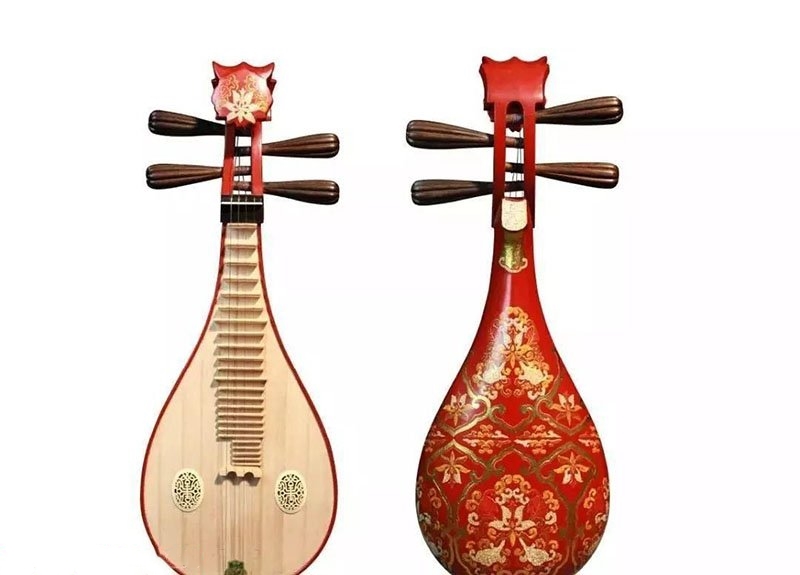Different forms of liuqin - five-string liuqin
In the development history of liuqin for more than 200 years, various forms of liuqin have appeared, such as the original two-string liuqin, three-string liuqin, four-string liuqin, five-string alto liuqin, seven-string liuqin, and double-resonance box liuqin. The music art of Liuqin has been expanded, and the development space of Liuqin has been expanded.

In 1975, Lin Jiliang and Yu Zhizhao of Dalian City Song and Dance Troupe successfully trial-produced the five-string alto Liuqin. The shape of this liuqin absorbs some characteristics of the pipa, and the back panel is made of red sandalwood or mahogany. The abdominal cavity expands upwards and there are sound beams and sound columns glued in between. The panel is made of three paulownia woods, which are reasonably distributed in terms of material, texture and thickness. The sound hole also changes its original shape and cancels the sound. Window, the frets are embedded in the fretboard separate from the panel, thus enhancing the panel vibration. The five strings are respectively set as A, d, a, d1, and a1, and are played with a pick. The pronunciation is sensitive and loud, the high and mid-range areas are similar to the high-pitched liuqin, and it has a slight pipa charm. At present, this kind of qin has been used for solo and ensemble. It not only has a good solo effect, but also acts as a bridge connecting the liuqin and pipa parts in an ensemble.
 渝公网安备 50010702504639号
渝公网安备 50010702504639号